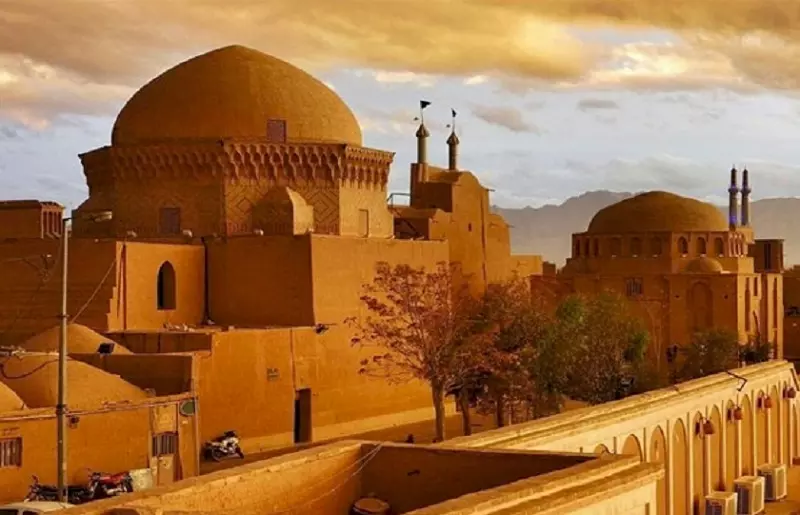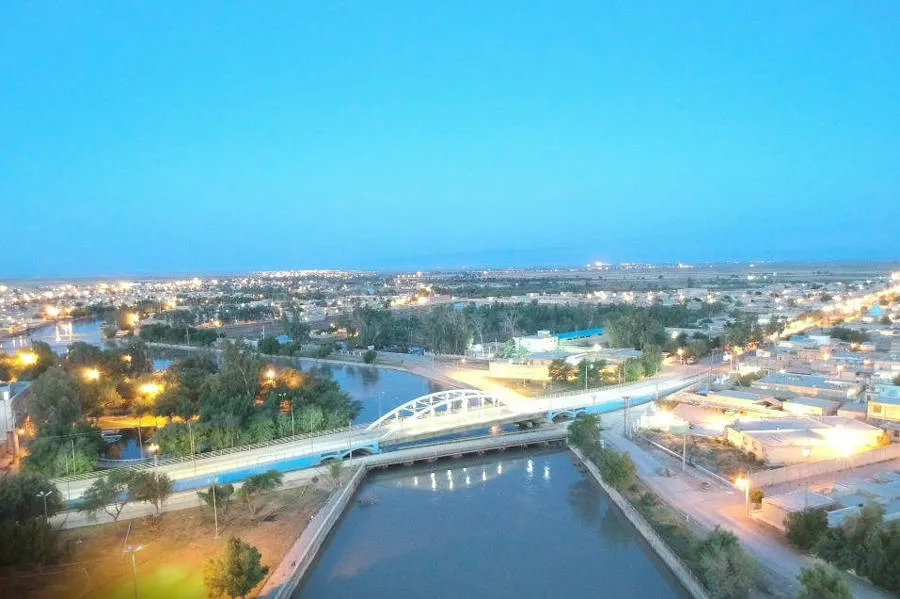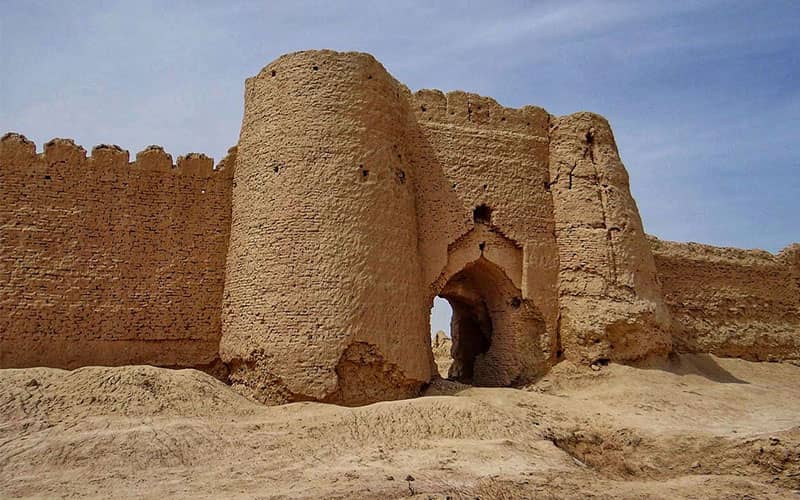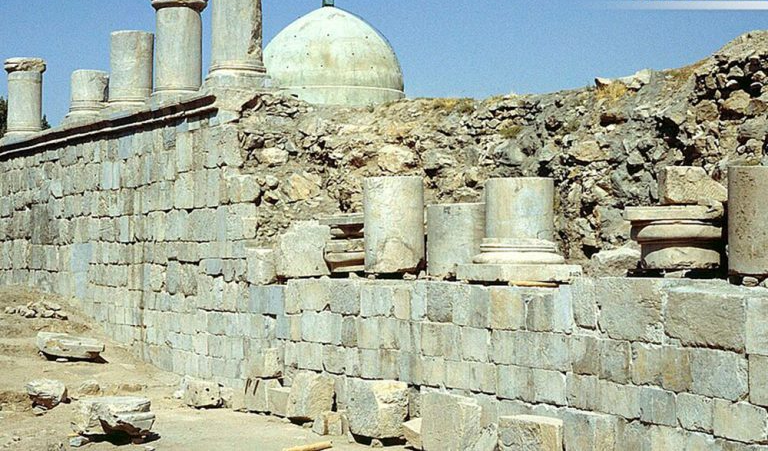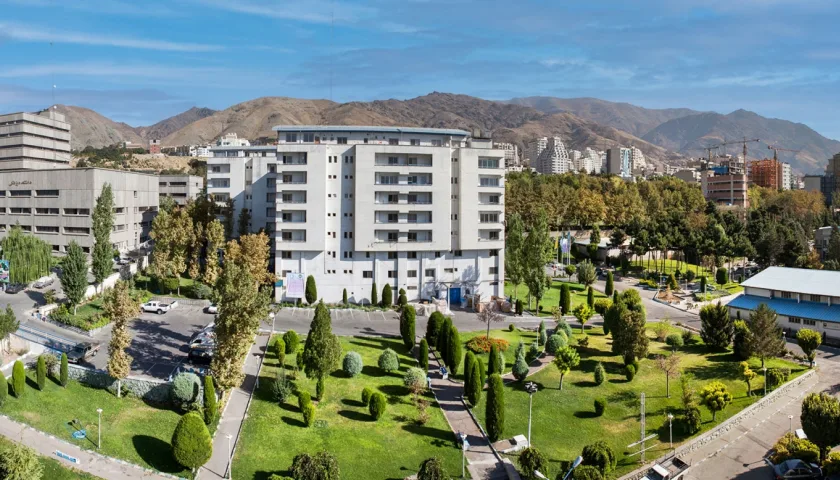The historical fabric of Yazd iran | From history to Yazd hotels
Yazd Historical Fabric is among the untouched residential fabrics in the history of Iran, covering an area of approximately 700 hectares. This historical fabric is considered one of the best places to visit in Yazd, featuring a harmonious blend of houses, old adobe alleys, and windcatchers, with numerous historical artifacts within its heart. In this historical fabric, all the social and individual life facilities are provided. Yazd Historical Fabric is bordered by Kashani Street to the south, Doulatabad Street to the north, Fehadan neighborhood to the east, and Motahari Street to the west. There are over 1700 adobe buildings in this historical fabric.
What you need to know about Yazd Historical Fabric:
History of Yazd Historical Fabric
Tourist attractions in Yazd Historical Fabric
Map of Yazd Historical Fabric
Architecture of the houses in Yazd Historical Fabric
Architecture of the alleys in Yazd Historical Fabric
Neighborhoods in Yazd Historical Fabric
Best time to travel to Yazd
Accommodations in Yazd Historical Fabric
Restaurants in Yazd Historical Fabr

History of Yazd Historical Fabric
The city of Yazd, known as “Yazdan” during the mythical era of Iran and the reign of the Pishdadian dynasty, held a prominent position. From the mythical era of Iran, this city was considered a sacred place associated with worship and the residence of deities. Yazd was known as Yazdgerd during the Sassanian period and continued to be renowned as such in various periods. In a certain historical period, it was also recognized as “Kaseh.”
The history of Yazd Historical Fabric dates back to the first and second centuries of the Islamic calendar. Yazd is considered one of the historical and ancient cities of Iran, and its architecture encompasses significant elements of historical and traditional Iranian architecture found in desert cities. The historical fabric of this city has roots in ancient Iranian history, but the discovered artifacts and structures in the historical fabric trace the city’s history back to the first and second centuries of the Islamic calendar.
Tourist Attractions in Yazd Historical Fabric
The historical fabric of Yazd, constructed with adobe and clay, boasts 1700 tourist attractions. Many tourists, both domestic and international, travel to Yazd to explore its historical fabric and its captivating attractions. The historical fabric is characterized by its old and adobe structures, providing all the necessary amenities for daily life.
Windcatchers, water reservoirs, peaceful alleys, along with 1700 other tourist attractions, contribute to the charm of Yazd Historical Fabric. In the historical fabric of the city, houses exhibit a unique desert architecture, featuring domes, windcatchers, and water reservoirs. These houses serve both winter and summer purposes, with specially designed rooftops for summer evenings. The houses boast distinctive and beautiful courtyards that attract visitors. The narrow and picturesque alleys with attractive architecture, numerous restaurants, various accommodations, the Jameh Mosque of Yazd, the six-windcatcher water reservoir, the market, and Amir Chakhmaq Square are among the notable attractions in Yazd Historical Fabric, offering a delightful experience for tourists.
Yazd Historical Fabric Map
The historical fabric of Yazd encompasses a section of the city constructed with adobe and clay, featuring unique neighborhoods. Prominent features of this part of Yazd include its domes and windcatchers, adding a special touch to the city. The map of Yazd Historical Fabric is visible in the image above.
The historical houses of Ilkhanid era in Yazd Historical Fabric are particularly appealing to tourists and are still suitable for habitation. Other historical structures in the old fabric of Yazd include the Chahar Minaar Mosque or Mir Khedr Shah Mosque, Shams al-Din Mausoleum, Kucheh Bandan Water Reservoir, and Dolat Abad Garden.
In summary, Yazd Historical Fabric represents a section of Yazd city characterized by adobe and clay construction, incorporating unique neighborhoods. Its distinctive features include domes and windcatchers that give the city a special allure. The map of Yazd Historical Fabric is visible in the image above.

Architecture of Houses in Yazd Historical Fabric
The historical fabric of Yazd boasts a unique architectural style, predominantly derived from adobe and clay. The distinctive feature of the architecture of houses in Yazd Historical Fabric lies in its use of these materials. The design of the houses takes into account the direction of wind flow and sunlight exposure. Each house in Yazd Historical Fabric consists of various sections, including outer and inner sections, platforms, halls, octagonal spaces, separate rooms with different purposes, windcatchers, serdars (cooling rooms), kitchens, and water reservoirs.
Windcatchers
One of the most captivating aspects of houses in Yazd Historical Fabric is their natural ventilation systems, renowned as windcatchers. Windcatchers are columns constructed in a polygonal shape, either four or eight-sided, designed to allow the entry of wind into the buildings. The wind enters the building through the windcatcher’s openings, regulating the temperature inside. Windcatchers played a crucial role in controlling the temperature of the houses during warm seasons. The openings of the windcatchers are adjusted to control the entry of wind, effectively cooling the houses. Inside the houses, there is a water basin, and as the wind hits the water surface, it cools down, creating a pleasant atmosphere inside the house. In some historical houses in Yazd, a wooden bed is placed over the basin, offering a relaxing spot during the summer.
Water Reservoirs
Another remarkable and attractive component of the architecture of houses in Yazd Historical Fabric is the water reservoirs. These reservoirs, known as “ab anbars,” are covered basins constructed in the underground section of each house. Ab anbars would fill up during rainy seasons, providing a source of water for households during times of low precipitation. The ceilings and domes of the water reservoirs, made of adobe, add to the appeal for tourists.
Architecture of Alleys in Yazd Historical Fabric
The narrow and winding alleys of Yazd Historical Fabric are highly appealing to tourists. The architecture of these alleys is based on the philosophy of close and intimate connections. These narrow and meandering adobe alleys are famous for their friendly atmosphere. They are so narrow that only two people can pass through them with difficulty. In these cozy alleys, there is no possibility of two people quarreling and attempting to pass each other without bumping into one another.
The alleys of Yazd, known as “ashti-konan,” are so narrow that neighbors would gather in them. However, due to the limited width, if two people needed to pass each other without confrontation, they would not find such a space. The historical houses in Yazd have tall walls, creating shade over the alleys. Covered sections of the alleys are called “sabats,” constructed for shading and the relaxation of alley residents. Residents would gather in the sabats for extended conversations, protected from the sun. The narrowness of the alleys and the presence of sabats led to the naming of Yazd’s alleys as “ashti-konan,” meaning reconciliation alleys, emphasizing the need for harmonious interactions during lengthy conversations.
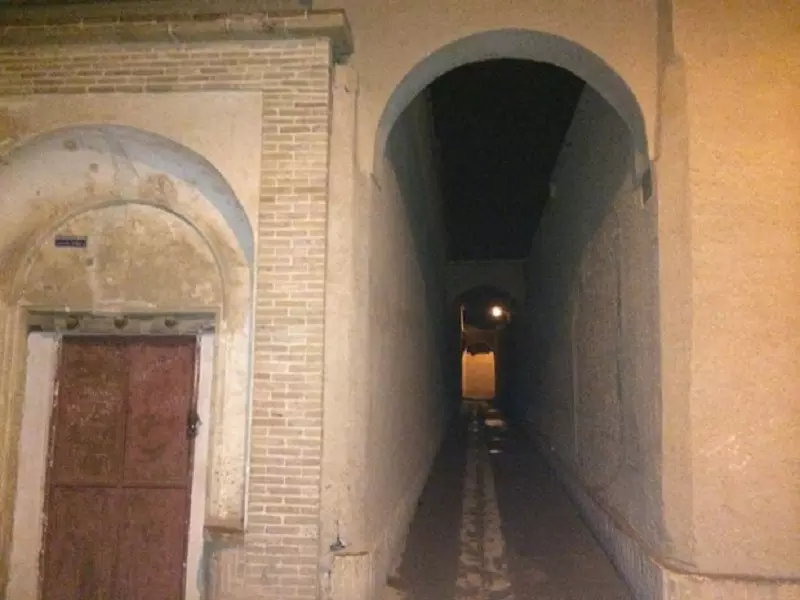
Historical Neighborhoods of Yazd
Yazd’s historical fabric is organized into distinct neighborhoods, each with its unique character. These include Fahadan, Old Castle Neighborhood, Masleh, Sar Jame, Buyuk Alley, Khorme Shah, Mirqotb, Chaharmanar, 6 Windcatchers, Yaghoubi, Lab-e Khandaq, and Sar Do Rah. Fahadan and Chaharmanar are the oldest neighborhoods within Yazd’s historical fabric.
Best Time to Travel to Yazd
Yazd is among the hottest cities in Iran, especially during the summer season when temperatures can reach up to 40 degrees Celsius. The most suitable time to visit Yazd in terms of weather is during Esfand and Farvardin (late winter and early spring). During these months, the weather is moderate, with an average temperature of around 16 degrees Celsius. If you cannot tolerate the heat, consider traveling to Yazd in autumn or winter, when temperatures do not exceed 20 degrees Celsius.
Yazd is bustling during the Nowruz (Persian New Year) holidays, and due to high accommodation prices and crowded conditions, finding a place to stay can be challenging, affecting the tranquility of travelers. While Yazd experiences extremely hot summers, the most peaceful times to visit are during less crowded periods.
Historical Accommodations in Yazd
The historical fabric of Yazd is an attractive destination for both domestic and international tourists. Consequently, a variety of accommodations have been provided for tourists in this section of the city.
Hotel-e Muzaffar
Address: Yazd, Motahari Street, Shahid Bokahi Alley, Hotel-e Muzaffar Yazd
Number of Rooms: 30
Hotel Stars: Three
Price Range: Moderate
Hotel-e Muzaffar, located in Yazd’s historical fabric, is a three-star hotel with two floors and 30 rooms. Built in 1266 Shamsi (Solar Hijri calendar), it underwent reconstruction in 1388 Shamsi. Hotel-e Muzaffar features a traditional courtyard, a beautiful symmetrical hall, and splendid windcatchers. The hotel offers a restaurant, café, parking, traditional dining area, bathhouse, and medical services.
Hotel Farhang
Address: Yazd, Shahid Beheshti Square, beginning of Imam Khomeini Street, Farhang Alley
Phone: 3536265011
Number of Rooms: 22
Hotel Stars: Two
Number of Floors: One (Suitable for the elderly)
Distance to Yazd Railway and Airport: 15 kilometers
Hotel Farhang is a two-star hotel situated in Yazd’s historical fabric. The hotel, with a history dating back to the Pahlavi era, was reconstructed in 1396 Shamsi to offer modern amenities to visitors. Its proximity to Yazd’s railway and airport is the most significant advantage. The hotel provides easy access to recreational and historical sites, as well as proximity to the city’s medical centers.

Hotel Fahadan
Address: Yazd, Imam Khomeini Street, Fahadan Neighborhood, Hotel Fahadan
Phone: 47623300
Number of Floors: Two
Number of Rooms: 30
Price Range: Expensive
Distance to Yazd Airport: 10 kilometers
Hotel Fahadan in Yazd is a three-star hotel located near Alexander’s Prison. This historical building dates back to the Qajar era and has been owned by a merchant named Tehrani. Known as Tehrani House, the hotel was opened in 1386 Shamsi. Hotel Fahadan’s structure includes historical elements like a basement, a well-house, an orange garden courtyard, and three windcatchers. Despite its traditional appearance, the hotel offers modern facilities for guests. The rooftop of Hotel Fahadan provides a captivating and dreamy view of Yazd. Observing the starry sky of Yazd at night is one of the attractions popular among tourists. If you are a traveler in Yazd and plan to stay at Hotel Fahadan, you should be aware that the hotel’s rooms, due to their traditional architecture, each have several steps. Hotel Fahadan offers a range of room options, from single to quadruple rooms, all of which lack windows.
Toranj Hotel Yazd
Address: Yazd, Imam Street, Hosseiniyan Alley, Salami Alley, No. 3, Toranj Hotel
Number of Floors: Three
Number of Rooms: 13
Price Range: Expensive
Toranj Hotel is considered one of the traditional accommodations situated in Yazd’s historical fabric. The building’s history dates back to the Qajar period. The large wooden entrance door leads through a corridor to the courtyard, which is one of the most attractive parts of the hotel. The courtyard walls, adorned with colored glass, create a dreamy view for tourists. Toranj Hotel provides facilities such as both Iranian and Western-style bathrooms, wireless internet, and the opportunity to enjoy the starry sky and the beauty of Yazd.
The rooftop of Toranj Hotel is used for enjoying coffee and observing the starry night sky of Yazd.
The building of Toranj Hotel was reconstructed in 1396 Shamsi, maintaining its original and traditional features. In one corner of the building’s courtyard, the Toranj restaurant offers various vegetarian and local dishes. For coffee lovers, the hotel’s rooftop cafe provides a perfect spot to enjoy coffee while taking in the panoramic views of Yazd’s night sky.
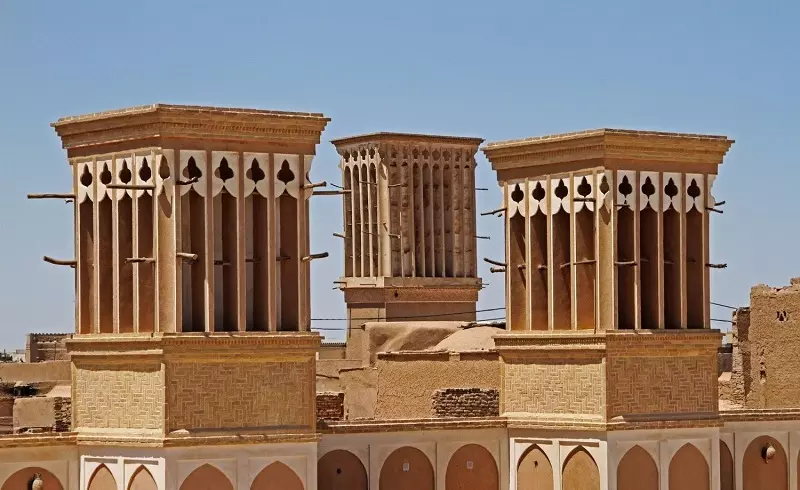
Chahel Panjereh Residence
Address: Yazd, Farrokhi Street, Opposite the Emergency, Chahel Panjereh Traditional Residence
Number of Floors: Two
Number of Rooms: 6
Chahel Panjereh Residence in Yazd, constructed during the Pahlavi era, is located in the historical fabric of Yazd. Upon entering the residence’s courtyard, a beautiful fountain surrounded by flowers catches the eye. Sitting beside the fountain offers a delightful experience. The residence features six rooms for guests, accommodating up to 35 people when combined. Recently renovated, Chahel Panjereh Residence has preserved the traditional architectural elements, only adding modern amenities. The surroundings of this eco-friendly residence include various attractions easily accessible to tourists. Chahel Panjereh Residence does not have a restaurant or cafe, but its amenities include parking, a hotel lobby, internet access, taxis, and air conditioning.
Adib Al-Mamalek Hotel Yazd
Address: Yazd, Lab Khandaq Street, No. 83, Adib Al-Mamalek Hotel
Number of Floors: One (Suitable for the elderly)
Number of Rooms: 17
Adib Al-Mamalek Hotel is a traditional residence located in Yazd’s historical fabric, with a building history dating back to the Qajar era, approximately 200 years ago. The structure adheres to the symmetry characteristic of Iranian desert regions. The hotel includes a Shah Neshin (reception area), a hall, three main doors, two secondary doors, and rooms on the upper floors. The building maintains a harmonious design throughout.
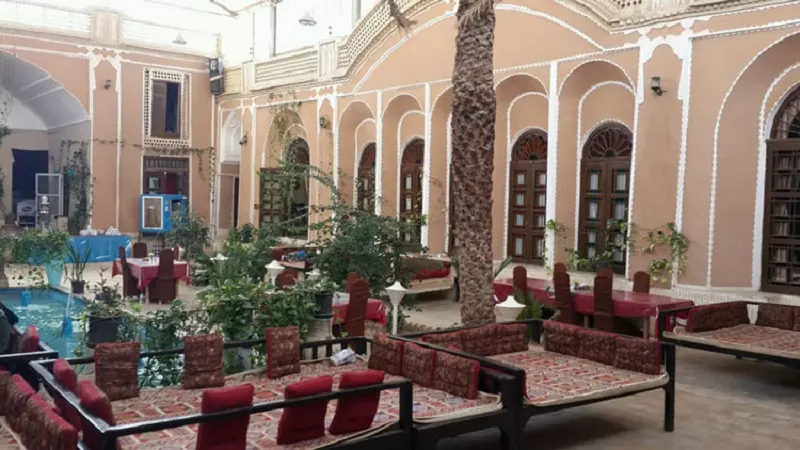
The basement and traditional bath are among the attractions of Adib Al-Mamalek Hotel. The ancient bath used copper vessels to generate warmth. The bath area and the dressing room have been preserved in their original form, offering a glimpse into the Qajar period. Beneath the house, a cool cellar is present, offering a cool environment in summer and warmth in winter. A qanat also passes under the hotel building. Adib Al-Mamalek Hotel provides amenities such as wireless internet, a tearoom, a restaurant, laundry, and a safe deposit box.
Saraye Sennati Negareh
Address: Yazd, Imam Street, Fahadan Neighborhood, Alexander’s Prison Compound, Saraye Sennati Negareh
Phone: 03516229324
Number of Rooms: Eight
Saraye Sennati Negareh is one of Yazd’s traditional accommodations, with a history spanning 50 years. Operating as a guesthouse since 1396 Shamsi, the building consists of eight rooms, and its staff warmly welcome guests with expertise. The hotel’s traditional space is decorated with antique objects. Saraye Negareh offers amenities such as parking, air conditioning, television, laundry, free internet, and bathroom facilities. For those interested in exploring Yazd’s adobe architecture, guides at the hotel can provide comprehensive information about Yazd’s attractions.
(Note: Some specific details might require verification or correction from local sources.)
Historical Fabric Restaurants in Yazd
The historical fabric of Yazd has been equipped with necessary facilities for the comfort of tourists and travelers who intend to visit this area. If you plan to have lunch or dinner in the historical fabric of Yazd, there are numerous restaurants in this area for you to choose from.
Tarameh and Toranj Restaurant
Address: Yazd, Fahadan Neighborhood, Uzdarans Bazaar, Tarameh and Toranj Restaurant
Phone: 03536301800
Working Hours: 11 AM to 11 PM
Capacity: 250 people
Tarameh and Toranj Restaurant opened in 1390 in the historical fabric of Yazd, specifically in the Fahadan neighborhood. This traditional restaurant serves Iranian and local dishes in a beautiful and pleasant setting. The attractive atmosphere and delicious food attract customers and visitors. With a capacity to accommodate 250 people, Tarameh and Toranj Restaurant are often used for large gatherings.
Fouca Café Restaurant
Address: Jameh Mosque Street, near Jameh Mosque, Fouca Café Restaurant
Phone: 03536208520
Working Hours: 10:30 AM to midnight
Fouca Café Restaurant in Yazd is a popular venue known for offering a diverse menu of Iranian and international cuisines, unique cakes, and delicious desserts, along with a variety of cold and hot beverages. The café restaurant features excellent and attractive decoration, making it stand out among Yazd’s restaurants and cafés.
Old Iranian Café Restaurant Yazd
Address: Jameh Mosque Street, at the end of the money changers’ bazaar
Phone: 03536205084
Working Hours: 11 AM to midnight
Situated in the historical fabric of Yazd, the Old Iranian Café Restaurant is considered one of the popular and old restaurants in Yazd. It serves traditional dishes such as Dizi and Shooli. For dessert and beverages lovers, the restaurant offers delicious cakes, desserts, and drinks like coffee and herbal tea based on guests’ preferences. While specializing in traditional Iranian delicacies, the restaurant also includes fast-food items like pizza and pasta in its menu. The rooftop area is set with tables and chairs for tourists who wish to dine under the starry sky.
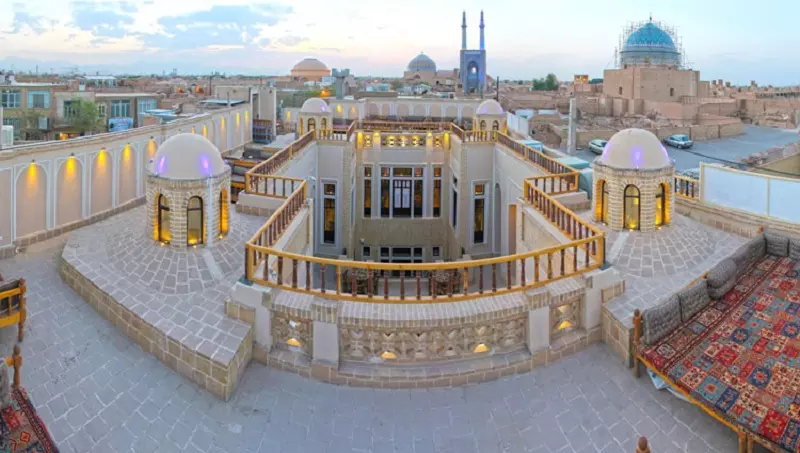
Khaneye Ebrahimi Restaurant
Address: Yazd, Moseley Street, near Nakhl Mirqotb Alley, Khaneye Ebrahimi Restaurant
Phone: 03536223367
Working Hours: 12 PM to midnight
Capacity: 400 people
Khaneye Ebrahimi Restaurant in Yazd is located in the historical fabric and boasts a capacity of 400 people, making it an excellent choice for hosting large events. The restaurant features a beautiful and lush courtyard, allowing guests to dine either in the open air or covered spaces, according to their preference. Traditional Iranian and fast-food menus are offered to guests.
The historical fabric of Yazd is one of Yazd’s tourist areas that holds great appeal for travelers. Strolling through the adobe and straw alleys of this region and visiting the historical clay and ancient buildings of Yazd takes travelers and tourists deep into history. In the historical fabric of Yazd, all the necessary facilities, including hotels and restaurants, have been provided for the use of tourists. If you have experienced visiting the historical fabric of Yazd, share your experience with Kojaro users.

Frequently Asked Questions:
What are the names of the alleys in the historical fabric of Yazd?
Aashti Konan Alley
What is the historical fabric’s historical background in Yazd?
It dates back to the first and second centuries of the Hijri lunar calendar.
What is the best time to travel to Yazd in terms of season?
The best time to travel to Yazd in terms of weather is during Esfand and Farvardin (February and March).
How is the architecture of the historical houses in the historical fabric of Yazd?
The architecture of the historical houses in Yazd is unique and traditional, characterized by adobe construction.

